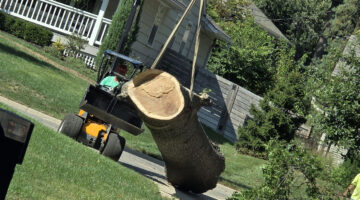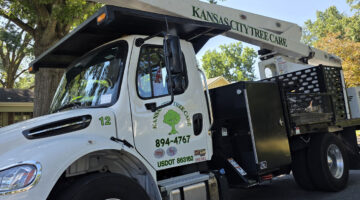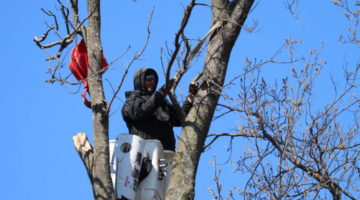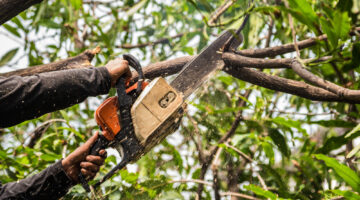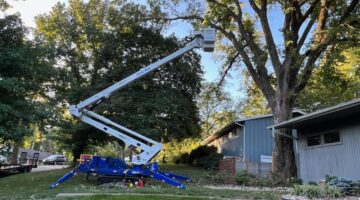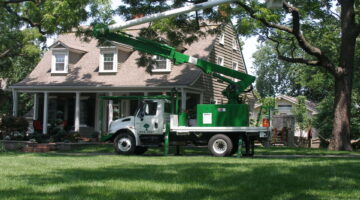Tree trimming might seem simple, but one wrong cut can harm your trees. Whether preparing for storm season or maintaining curb appeal, proper tree care is key in Kansas City. Many residents try DIY tree trimming without the right tools or knowledge, leading to common mistakes.
This post covers the five most frequent DIY tree trimming errors and offers tips to keep your trees healthy. Plus, we’ll help you know when it’s time to call the professionals.
The Importance of Proper Tree Trimming in Kansas City
Kansas City is known for its stunning tree-lined streets and lush greenery, but maintaining your trees requires more than an occasional trim. Proper tree trimming promotes healthy growth, protects your property from storm damage, and preserves your property value. However, mistakes in trimming can lead to irreversible damage, increased risks during storms, or the premature need for tree removal. To help you avoid these pitfalls, here are the five most common mistakes made by DIY tree trimmers and how to steer clear of them.Trimming Trees at the Wrong Time of Year
Why Timing Matters
One of the biggest mistakes homeowners make is trimming their trees at the wrong time of year. Cutting branches during active growth seasons can stress trees, making them more susceptible to disease, pests, or slow regrowth.Best Times to Trim Trees in Kansas City
Late winter and early spring are typically the best times to trim trees in Kansas City. During these dormant months, trees are less active, which reduces stress from pruning and allows them to heal more efficiently before the growing season begins. This timing is especially important for maintaining the tree's overall health and structure. For flowering trees, the timing for pruning is more specific. It's best to prune them immediately after they bloom to avoid cutting off buds that will produce next year's flowers, ensuring they continue to flourish beautifully year after year. Proper pruning not only helps maintain the shape and appearance of your trees but also encourages healthy growth and prevents potential hazards, such as dead branches falling. Pro Tip: If you're unsure about when or how to prune, consult a local arborist for expert advice tailored to your specific tree species and their unique pruning schedules. A professional can also help you identify any underlying issues that may need attention, such as diseases or pests.Over-Pruning
Why Over-Pruning is Harmful
Over-pruning is one of the easiest mistakes to make, especially when you’re eager to shape your trees or increase sunlight penetration. However, removing too much foliage can deprive a tree of its ability to produce enough energy through photosynthesis. This can weaken the tree and make it more prone to disease or storm damage.How to Avoid Over-Pruning
- Follow the 25-Percent Rule: Never remove more than 25% of a tree’s foliage in one year.
- Remove Dead or Diseased Branches First: Focus on removing branches that are dead, damaged, or potentially hazardous.
- Step Back and Assess: After every few cuts, step back and evaluate your work. This helps maintain balance and prevents accidental over-pruning.
Using the Wrong Tools
Why Tools Matter
Using improper or dull tools can tear or damage branches, leaving trees vulnerable to infections and pathogens. When branches are cut unevenly, they struggle to heal, creating entry points for pests and diseases that can harm the tree over time. Many DIYers underestimate the importance of using the right equipment for tree trimming, resulting in inefficient cuts that can cause unnecessary strain on the tree’s structure and even lead to long-term damage. Choosing the right tools ensures clean, precise cuts that promote healthy tree growth and reduce the risk of spreading diseases.Recommended Tools for Tree Trimming
- Hand Pruners: Ideal for branches less than 1 inch in diameter. These lightweight tools are perfect for small pruning tasks, such as removing dead flower heads or snipping small twigs for a clean, polished look.
- Lopping Shears: Designed for medium-sized branches (up to 2 inches in diameter), these shears offer longer handles for better leverage, making it easier to cut thicker branches without exerting too much pressure.
- Pruning Saws: These are essential for larger limbs requiring precision cuts. Available in various shapes and sizes, pruning saws are perfect for tackling tough, woody branches that hand pruners or loppers can’t handle.
- Pole Pruners: Useful for hard-to-reach branches without the need for a ladder, pole pruners allow for safe, efficient trimming at height. Some models even include a small saw attachment for cutting thicker branches.
- Chainsaws: Recommended for experienced users only, chainsaws are indispensable for heavy-duty jobs like removing large limbs or felling small trees. Always prioritize safety and follow manufacturer guidelines when using this powerful tool.
Ignoring Tree Structure
Why Tree Structure Matters
Trees have a natural form and structure, which provides both stability and aesthetic appeal. Ignoring this structure during trimming can result in lopsided trees, weakened branches, or excessive stress on certain areas.Basic Tree Structure Principles
- Preserve the Leader: Most trees have a central leader (the tallest vertical branch). Trimming this can stunt growth or create weak branch structures.
- Focus on Crossed or Crowded Branches: Remove branches that rub against each other to avoid damage.
- Look for the Collar: The collar is the swollen area where the branch meets the trunk. Always cut just outside this area to promote healing and prevent rot.
Not Knowing When to Call a Professional
Why Professional Help is Sometimes Necessary
While DIY efforts are admirable, there are times when trimming your trees without professional expertise can do more harm than good. Complex jobs, such as storm recovery, stump grinding, or tree removal in Kansas City, often require specialized skills and equipment. Attempting these tasks on your own may lead to safety hazards and property damage.Signs You Need a Professional Tree Service
- Large Trees: If your tree is too tall for safe trimming with a pole pruner, call a professional tree care service equipped to handle the height.
- Diseased or Dying Trees: Signs of disease, such as decayed trunks, unusual leaf discoloration, or fungal growth, require expert attention.
- Branches Near Power Lines: Cutting branches close to power lines is a job for trained arborists to avoid electrocution risks.


